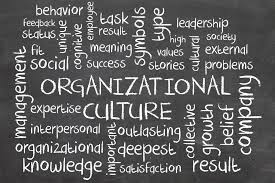Communicating and Embedding the Organization’s Culture (Part II of IV)

An organization’s culture does not exist in a vacuum. It is communicated and executed every day. It is the guidepost by which internal and external interactions occur and is carried out by individuals in a multitude of tasks. If you stop to consider the number and nature of daily interactions, internally and externally, carried out by leadership, managers and employees, it is overwhelming (especially if you think like a CCO and consider all the opportunities for misconduct, but that is for another day).
To focus on this issue, it is important to start by considering the actions of an employee who carries out assigned tasks under his/her immediate supervisor. This relationship is established through a set of expectations, requirements and beliefs. Each individual acts in accordance with their understanding and integration of an organization’s culture. These interactions are multiplied and reflect an overall set of expectations and beliefs.
The “socialization” of an organization’s culture is obviously “communicated” in two ways – internal messaging and actions. Leadership plays a critical role in this process. Employees look to their colleagues, their supervisors and their leaders to understand the organization’s set of values and beliefs. The CEO and senior executives demonstrate their commitment to culture by expressing it through internal messages. Everyone knows that and most organizations make an effort to message important culture messages from leaders.
This is a small part (and I mean small) of what is really needed. It is here where organization’s fail to focus and devote adequate attention. Two significant issues have to be addressed.

First, how do leaders, supervisors and managers promote an organization’s culture by their respective conduct? This is a rhetorical question.
Leaders have to combine two concepts – symbolic actions often communicate powerful ideas, and his/her conduct and reporting of his/her actions sends an important message. A CEO who understands the power of symbolism will make attempts to communicate messages to inspire employees.
Some examples include: a CEO who provides a monthly ethics award to an employee and publicizes it in the company; a CEO who rejects some of the frills of the leadership position and regularly interacts with employees at regular employee meetings; a CEO who rejects a business strategy because it is inconsistent with the organization’s culture and values; and a CEO who urges employees to report concerns internally to supervisors or hotline reporting system.
A second important strategy that more organizations are embracing is the training of middle management to ensure that middle managers communicate and operate in accordance with the organization’s culture. As part of this initiative, middle managers are indoctrinated into culture spokesperson roles – interacting with employees and pushing the ethics and culture message.
Employees look to middle managers for direct and immediate guidance, not just on specific tasks but on how to interact with each other and colleagues in the organization. Middle managers carry a large weight on their shoulders. They are critical culture partners who bring the message and the conduct underlying an organization’s culture.

Middle managers who engage in misconduct or have poor interpersonal skills can have a damaging impact on a company’s culture. Employees who witness a supervisor who engages in misconduct will question the company’s culture – if the organization’s culture is strong, the employee will report the supervisor; if the organization’s culture is weak or under construction, the employee may fall short in his/her own behavior.
A number of companies have adopted ethics ambassador programs under which the organization designates representatives around the company to “represent” the ethics and compliance mission. This is a positive step as an adjunct to an independent and empowered compliance function. Like middle managers, ethics ambassadors can be valuable participants in the organization’s culture mission.















